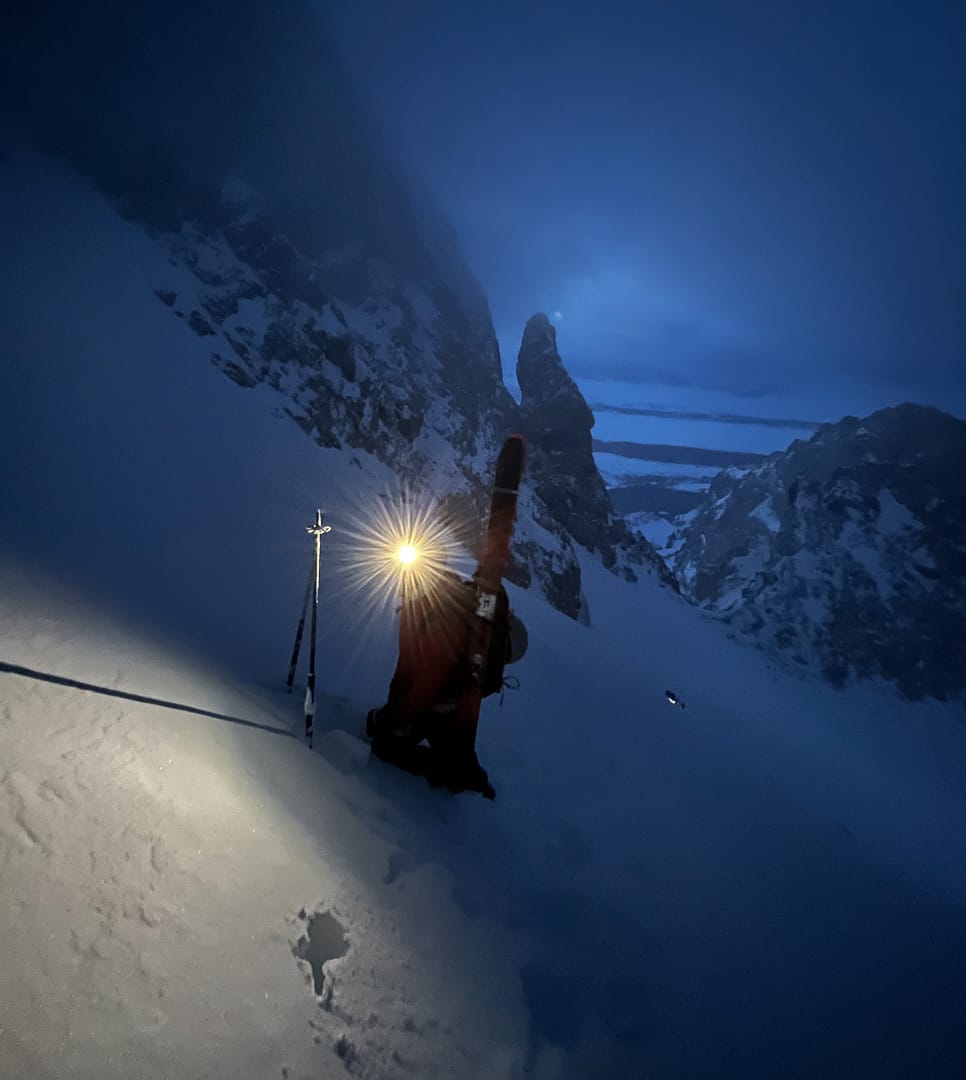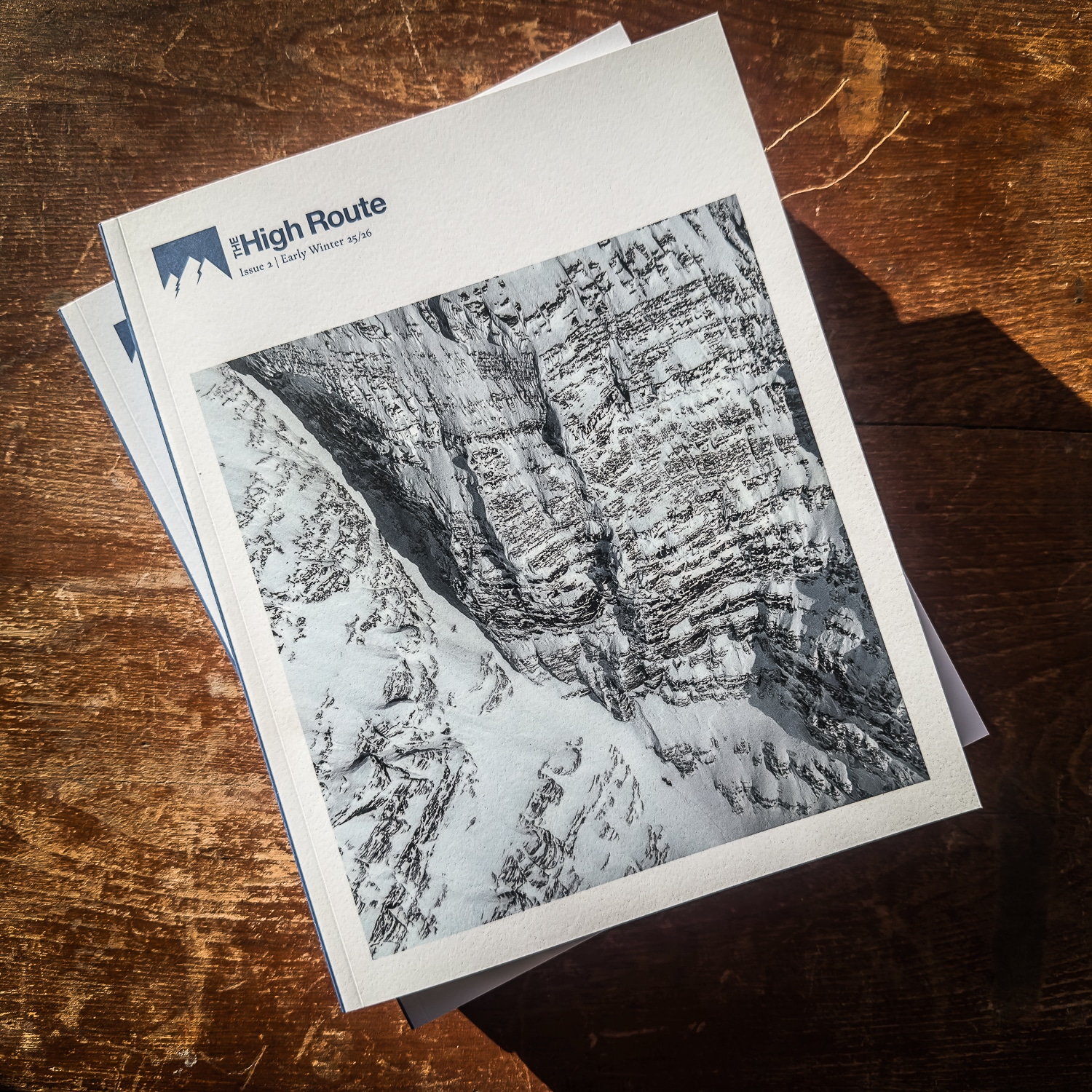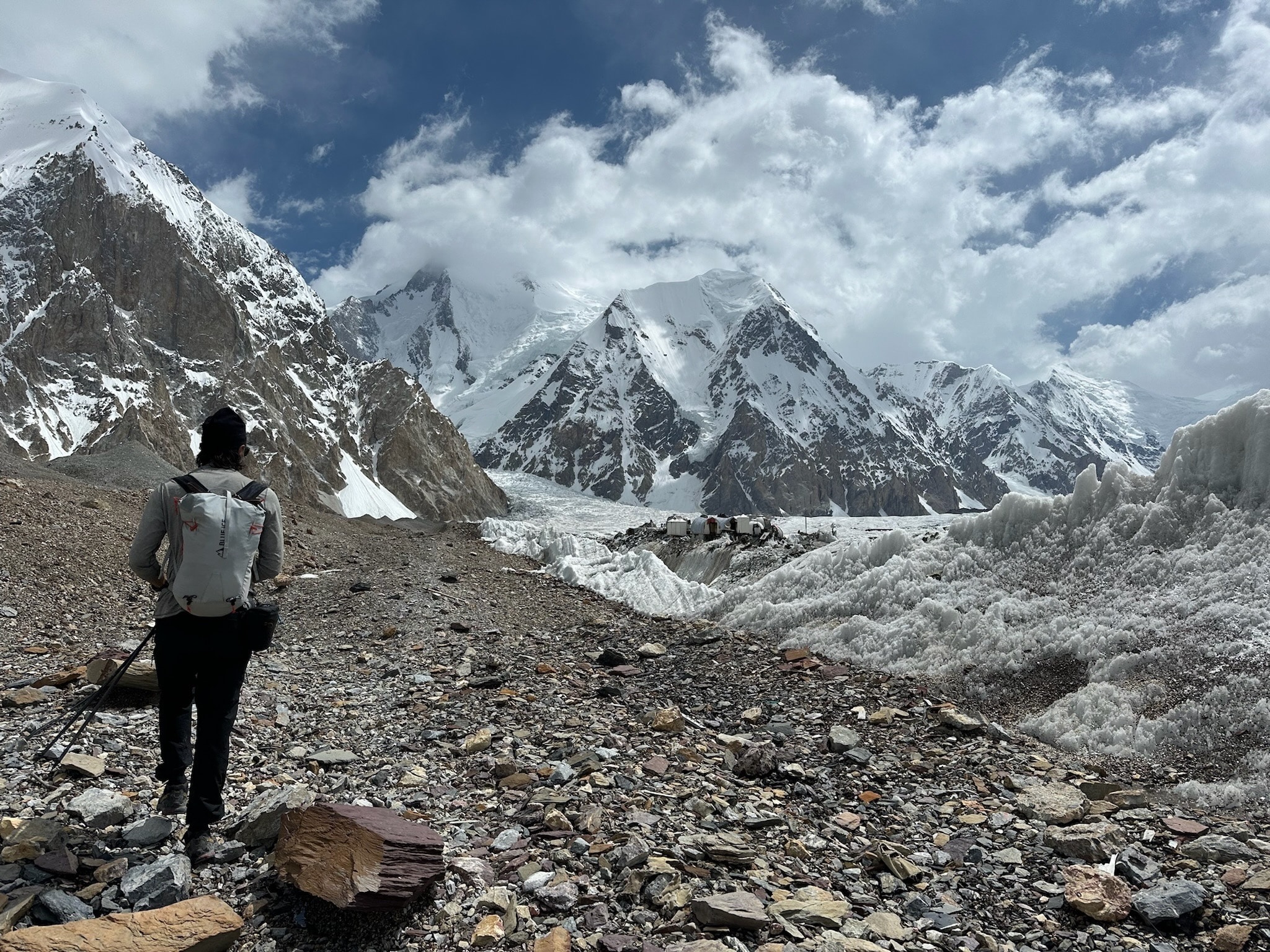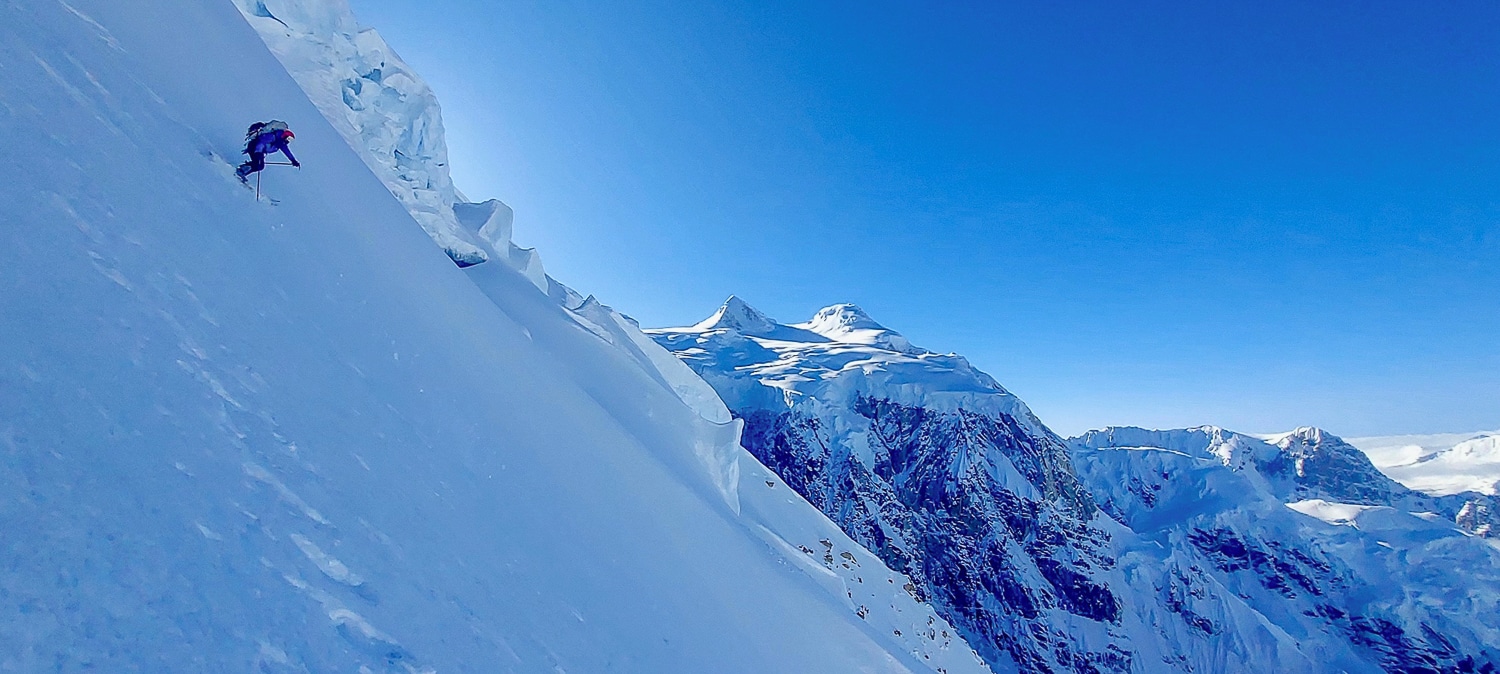We’re certainly not advocating carrying the kitchen sink. Moving efficiently in the mountains often requires choosing specific gear to bring along and leaving other items at home. Through experience and finding what works for you, we hope you are prepared for most emergency scenarios. Remember that plummeting temps, especially once the sun goes down, can make it all hit the fan mighty fast in winter.
The key, again, like packing for a spring mission, is to keep the pack and its contents as light as possible. And we don’t need to mention skins do we? We expect they’ll be on your skis and not in our pack as you begin the tour.
Your mid-winter mission might also require more technically oriented sharp and pointy things and a rope. Plan for expected conditions and carry the proper gear.
The Pack
There’s a big spectrum for what we consider a suitable winter pack. You’ll want the volume to absorb extra bulky clothing and a ski carry system suitable for potentially longer and wider skis; it is powder season. All this means potentially more weight: the pack must carry well and find a suspension system that makes carrying weight more comfortable.
Some of you can pair down the winter kit and make do with a 20L pack. In this run down, we are thinking about a typical winter powder day with temps dropping into the 20s Fahrenheit or lower. On those days, we’re bringing the extra layers. Narrowing down the pack selection is difficult; many companies do a great job designing winter ski packs. Find one that fits your body and needs and is moderately durable (lighter fabrics often mean less durability). Spending several hundred dollars on a ski pack means it should be around for many seasons.
Safety Gear
- Non-negotiable: Shovel, Beacon (worn on your body), Probe
- Spare transceiver batteries
- Semi-negotiable: Two-way radio. On most days, we recommend bringing group radios. They have considerable upsides, intra-group comms are more efficient, and they can also promote more effective inter-group comms in zones with common radio channels.






Leave a Reply
You must be logged in to post a comment.